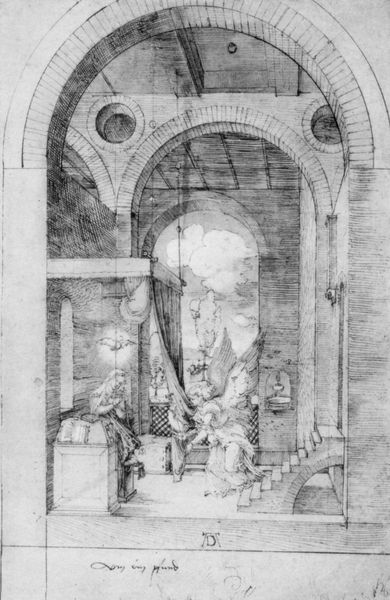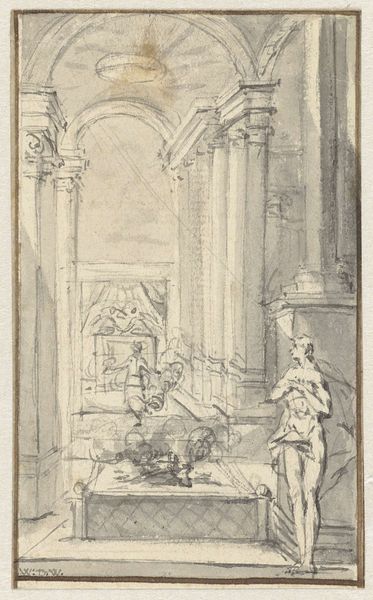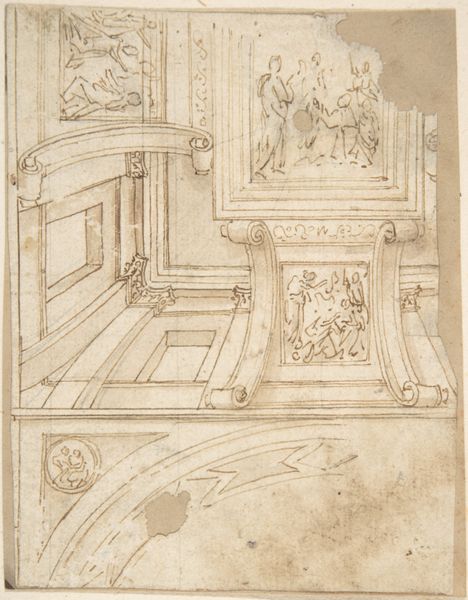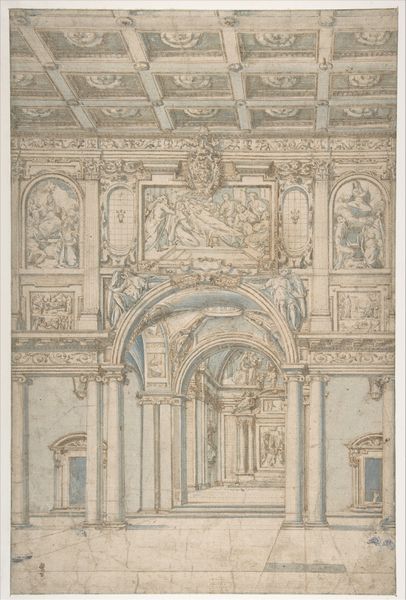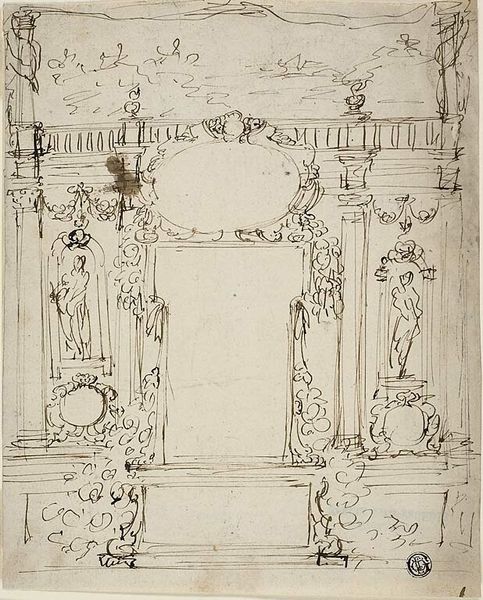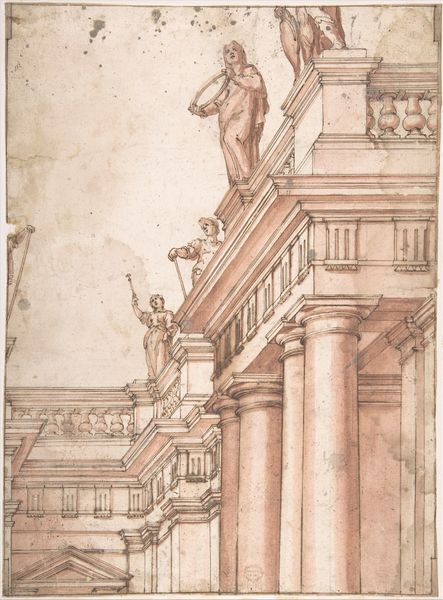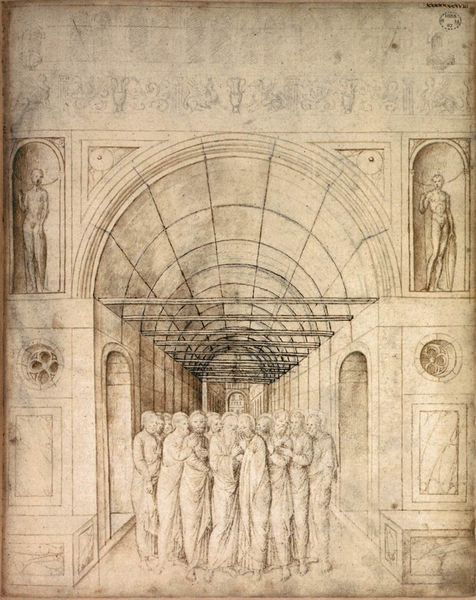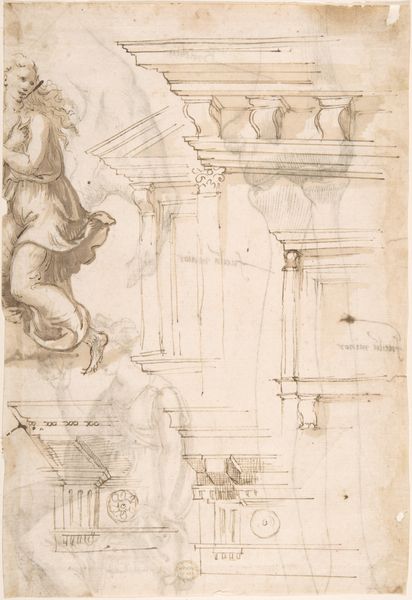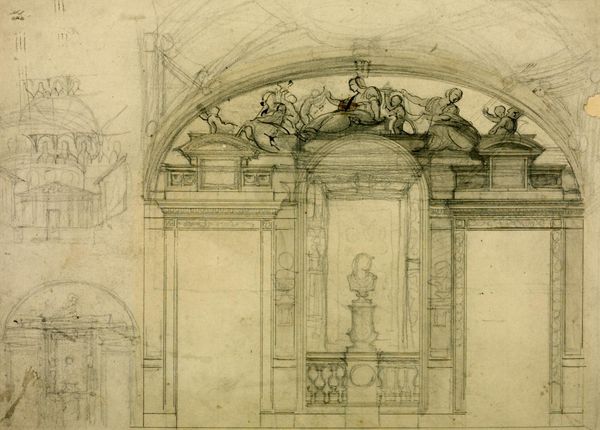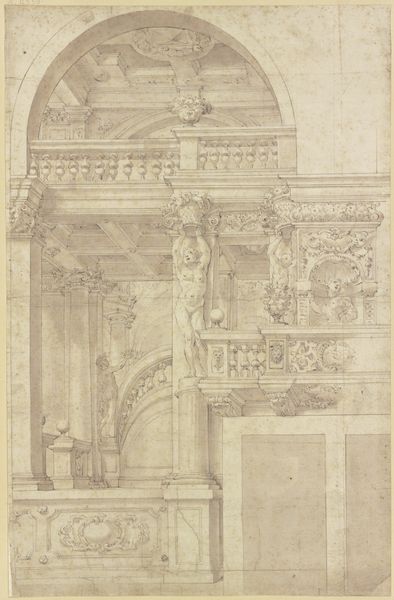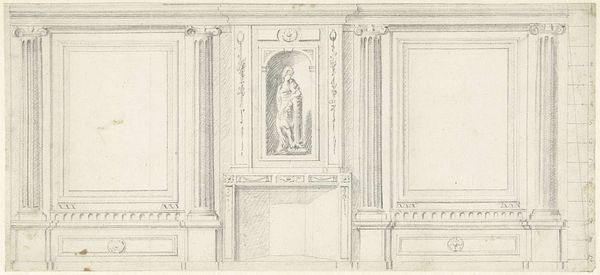
drawing, print, paper, ink, chalk, graphite, architecture
#
portrait
#
architectural sketch
#
drawing
# print
#
landscape
#
classical-realism
#
figuration
#
paper
#
11_renaissance
#
ink
#
classicism
#
chalk
#
graphite
#
cityscape
#
miniature
#
architecture
Dimensions: 257 × 175 mm
Copyright: Public Domain
Curator: "Corner of a Loggia with Female Statue" by Pietro Righini. It's rendered in ink, graphite, and chalk on paper. It feels like a stage set. So contained and considered. What jumps out to you? Editor: Well, initially, the technique is what grabs me, it’s so detailed. It looks like something lifted from a Renaissance architectural treatise. How do you interpret it? What should we be paying close attention to? Curator: Notice how Righini has lavished such precise, painstaking labor onto rendering what is, essentially, a fragment. Think about the raw materials. The sourcing, preparation, and transformation of chalk, graphite, and ink into this representational form required dedicated workshops and specialized skills. What does it signify, this investment in recreating elite spaces with such "humble" material? Editor: Are you suggesting the act of drawing elevates these spaces? It immortalizes architecture and this particular classical style, even if only on paper. The artistic labour involved renders them accessible, turning this elite architecture into a commodity? Curator: Precisely! This drawing acts as both document and aspirational object. It represents classical ideals, making them available for study, emulation and, yes, consumption, potentially inspiring other artists to further transform its aesthetic into everyday objects. Can you imagine where this drawing might fit into a larger system of production and value? Editor: I suppose it would serve as a template, ready for translation into paintings, engravings or even smaller decorative arts for those seeking to align themselves with that upper-class taste, classical learning… fascinating. Thanks. Curator: Indeed! Reflecting on the artist's work and social contexts through these media helps us understand cultural and economic production and consumption, doesn't it?
Comments
No comments
Be the first to comment and join the conversation on the ultimate creative platform.
